Spacewalking Astronauts Prep Space Station for SpaceX, Boeing Spaceships
Two NASA astronauts took a spacewalk today (June 14) to continue preparations for the arrival of the first commercial crew vehicles that will launch to the International Space Station (ISS) later this year.
Expedition 56 Cmdr. Drew Feustel and flight engineer Ricky Arnold departed the ISS through the Quest airlock after switching their spacesuits over to battery power at 8:06 a.m. EDT (1206 GMT). They spent 6 hours and 49 minutes working in the vacuum of space.
Some technical difficulties put them off to a rough start, but the two spacewalkers aced all of their assigned tasks for the day and even had some time left over for a few get-ahead tasks. They spent some time wrestling with a jammed panel to a micrometeoroid shield, which was stuck open and needed to be closed. [Expedition 56: The Space Station Mission in Photos]
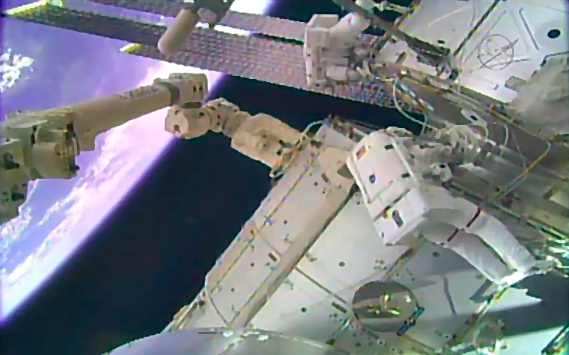
Flight controllers were considering giving up on the pesky door so the spacewalkers could move on to other important tasks, but Feustel was unwilling to give up on the stubborn panel. With a little elbow grease and a lot of determination, he put that panel in its place. "I think I got it!" Feustel exclaimed while catching his breath after the strenuous feat.
Feustel's most notable achievement of the day came a few hours later, when he surpassed NASA astronaut Peggy Whitson's accumulated spacewalking time, bumping him up from seventh place to third place on the list of most experienced spacewalkers. "Feustel has now moved into third for all-time spent spacewalking," NASA TV commentator Dan Huot said during a live broadcast of the spacewalk. He also surpassed Russian cosmonaut Fyodor Yurchikhin and NASA astronauts Jerry Ross and John Grunsfeld.
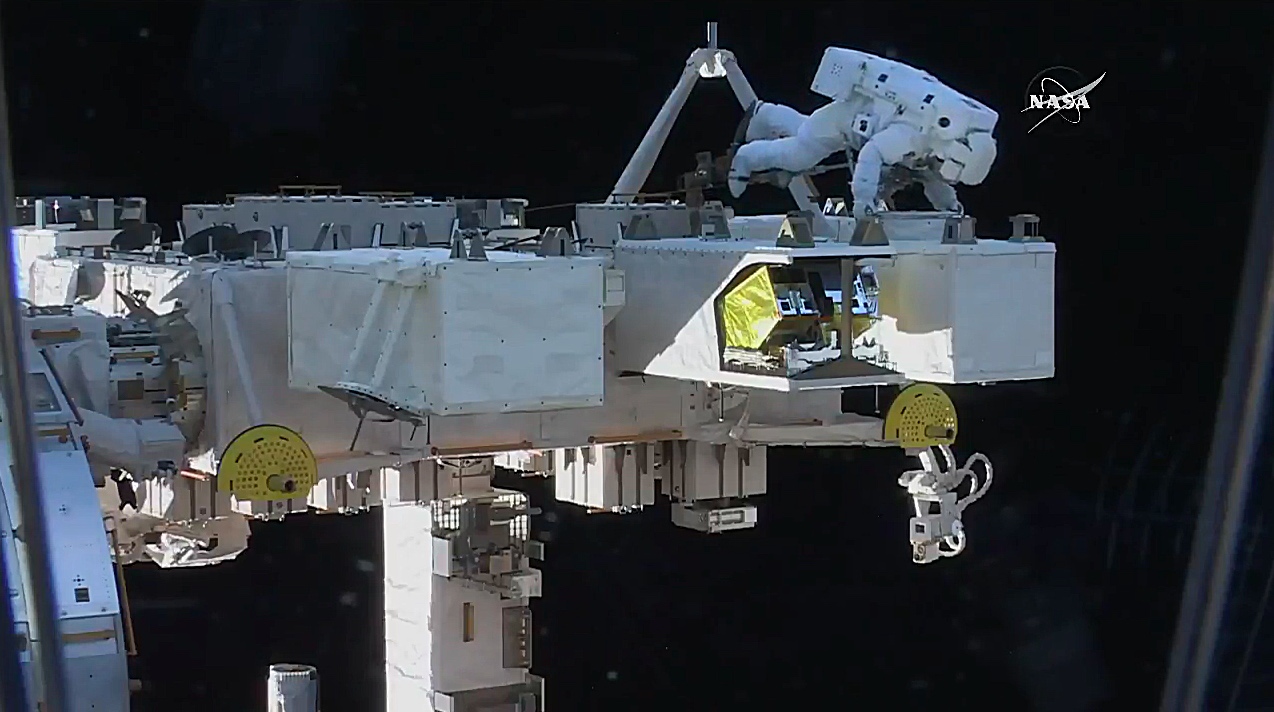
Feustel has now spent a total of 61 hours and 48 minutes working in the vacuum of space, or 1 hour and 21 minutes more than Whitson. It was the ninth spacewalk of Feustel's career as a NASA astronaut. Arnold, who completed his fifth spacewalk today, has accumulated a total of 32 hours and 4 minutes of spacewalking time.A rnold and Feustel have now completed three consecutive spacewalks together this year. For the last two spacewalks, Feustel was designated as EV-1 (extravehicular crewmember 1), and Arnold was EV-2. Today, however, the roles were reversed.
"Welcome to being the first out of the hatch," Feustel told Arnold as they left the Quest airlock this morning. To make it easier to tell the two spacewalkers apart, the spacesuit for EV-1 has red stripes, while the spacesuit for EV-2 is plain white.
Get the Space.com Newsletter
Breaking space news, the latest updates on rocket launches, skywatching events and more!
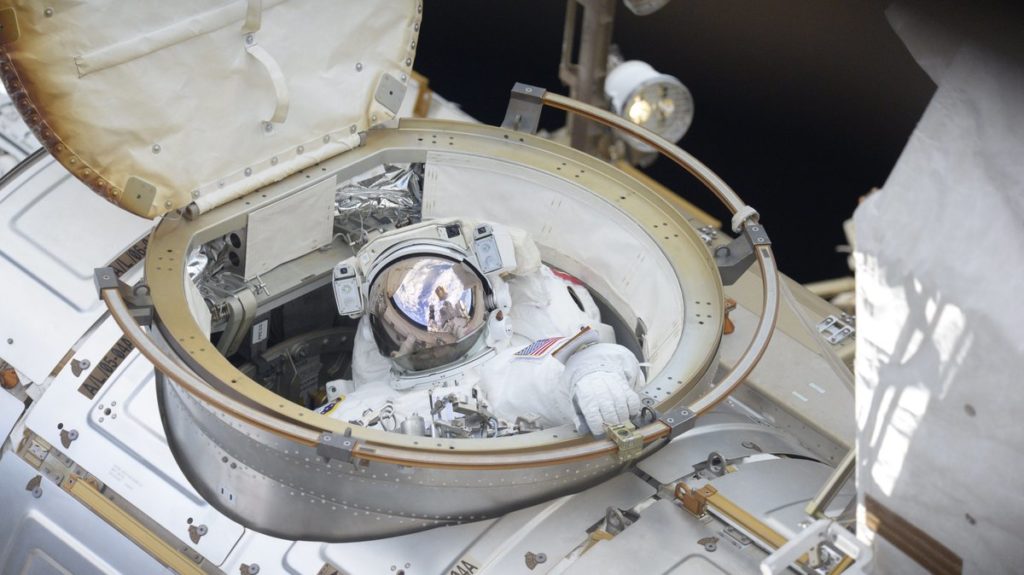
The main objectives for today's spacewalk were to install new brackets and high-definition cameras outside the Harmony module, where SpaceX's Crew Dragon and Boeing's CST-100 Starliner will start arriving in August.
Following the first uncrewed test flights, these two spacecraft will begin transporting astronauts in 2020. NASA contracted both companies to design and build these spacecraft to end the agency's reliance on Russia's Soyuz spacecraft, which have transported all U.S. astronauts to the ISS since the shuttle program ended in 2011.
In order for commercial crew spacecraft to dock with the Harmony module — at a port that was originally built to accommodate only space shuttles — astronauts had to retrofit it by installing an International Docking Adapter (IDA) during a spacewalk in 2016. The new cameras installed during today's spacewalk will help arriving spacecraft line up with the IDA while docking at the space station.
Additionally, the cameras will provide wireless network access to experiments outside the European Space Agency's (ESA) Columbus laboratory and the Japanese Experiment Module - Exposed Facility.
Some of the best views of today's spacewalk, which was broadcast live on NASA TV, came when Arnold mounted the Canadarm2 robotic arm to replace a camera and a light that were too far out of reach for an astronaut tethered to the main body of the ISS. His Expedition 56 crewmates, NASA astronaut Serena Auñón-Chancellor and ESA astronaut Alexander Gerst, controlled Canadarm2 from inside the space station to give Arnold a lift.
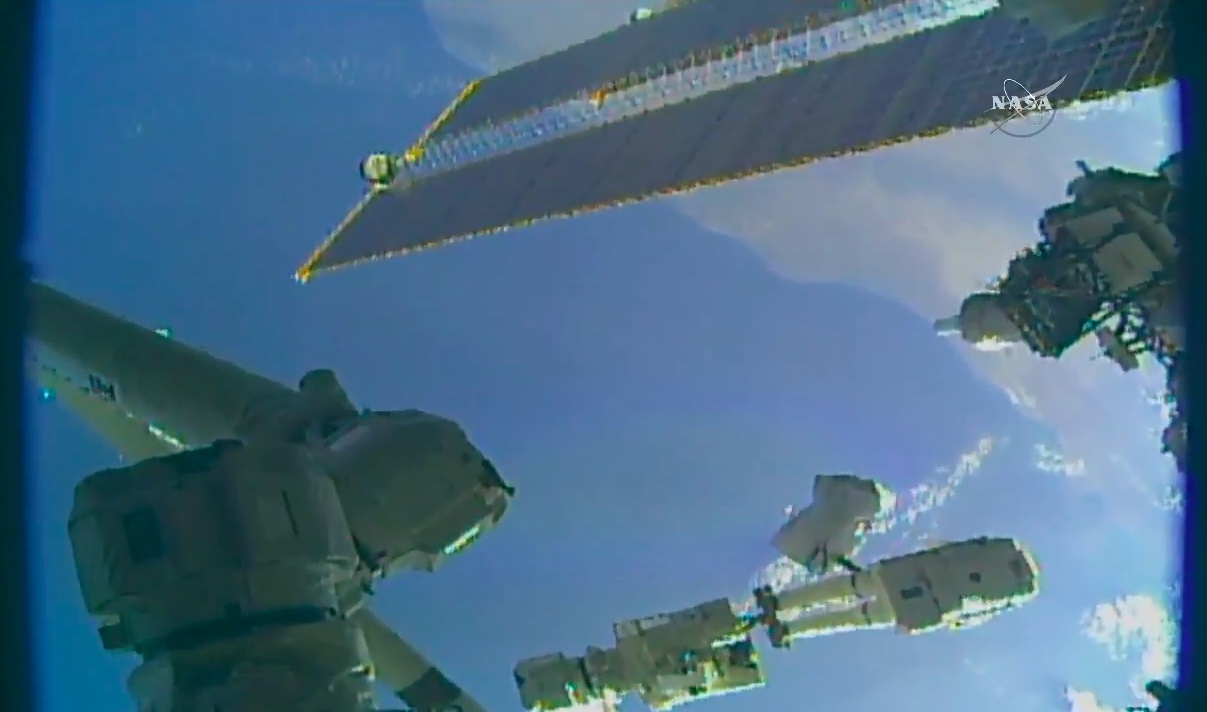
Back at NASA's Johnson Space Center in Houston, ESA astronaut Andreas Mogensen — the first Danish person to fly to space — served as the capsule communicator (CAPCOM) and helped guide the spacewalkers through their tasks for the day.
"Andy, where are we in the world?" Feustel asked as the space station passed over turquoise-blue waters and a chain of islands.
"We are over the Caribbean," Mogensen replied.
"OK, just wondering what islands I was looking at … thanks for not saying 'space station,'" Feustel said.
When Mogensen informed the spacewalkers that they were passing over the Great Lakes, Feustel made a shout-out to his friends and family back home. "Hello, Detroit!" he said.
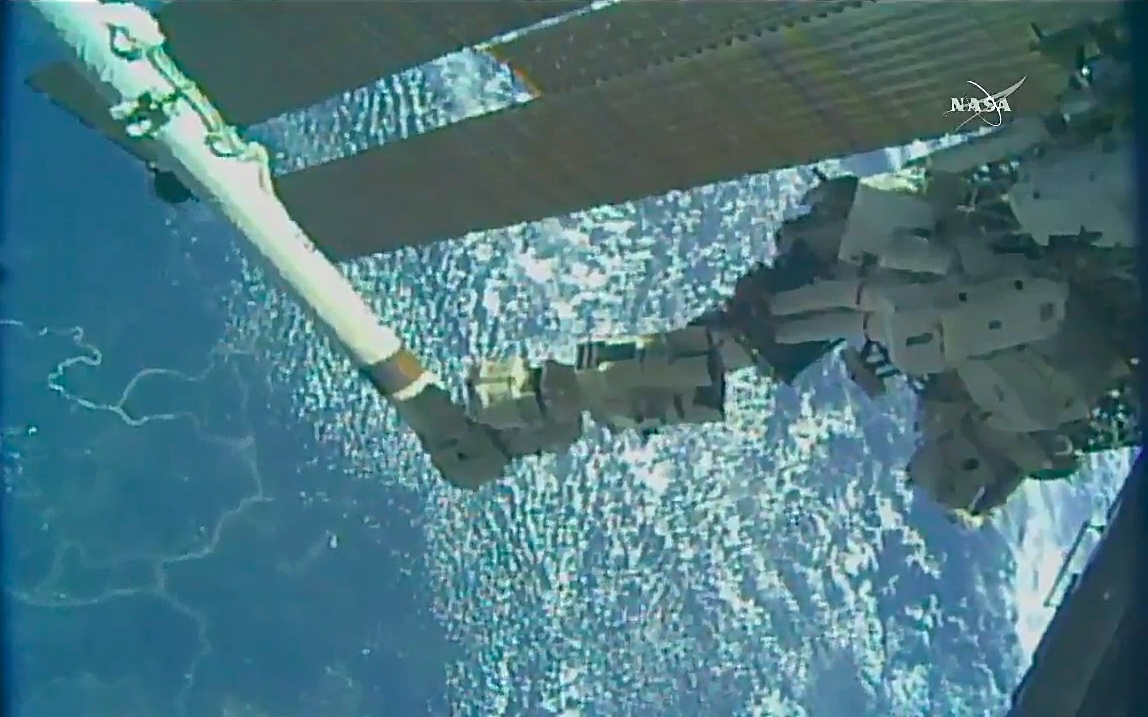
Feustel and Arnold squeezed in as many get-ahead tasks as they could before heading back inside the airlock. The spacewalk officially ended at 2:55 p.m. EDT (1855 GMT) when they switched their spacesuits off battery power. This was the 211th spacewalk in support of assembly and maintenance of the International Space Station.
Email Hanneke Weitering at hweitering@space.com or follow her @hannekescience. Follow us @Spacedotcom, Facebook and Google+. Original article on Space.com.
Join our Space Forums to keep talking space on the latest missions, night sky and more! And if you have a news tip, correction or comment, let us know at: community@space.com.

Hanneke Weitering is a multimedia journalist in the Pacific Northwest reporting on the future of aviation at FutureFlight.aero and Aviation International News and was previously the Editor for Spaceflight and Astronomy news here at Space.com. As an editor with over 10 years of experience in science journalism she has previously written for Scholastic Classroom Magazines, MedPage Today and The Joint Institute for Computational Sciences at Oak Ridge National Laboratory. After studying physics at the University of Tennessee in her hometown of Knoxville, she earned her graduate degree in Science, Health and Environmental Reporting (SHERP) from New York University. Hanneke joined the Space.com team in 2016 as a staff writer and producer, covering topics including spaceflight and astronomy. She currently lives in Seattle, home of the Space Needle, with her cat and two snakes. In her spare time, Hanneke enjoys exploring the Rocky Mountains, basking in nature and looking for dark skies to gaze at the cosmos.









